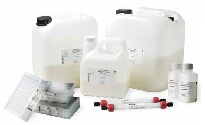

Yet, in comparison with the numerous detailed reviews outlining the various different formats of bsAbs, along with the associated upstream platform technologies to generate them in order to minimize product-related impurities and their corresponding therapeutic applications, the review of downstream purification of this important class of antibodies is comparatively limited, which may at least in part be attributed to the fewer publications that focus on the purification of these antibodies. The enormous therapeutic potential of bsAbs has led to the development of over 50 different formats of recombinant bsAbs reported so far.

INTRODUCTIONīispecific antibodies (bsAbs) demonstrate novel functionalities that yield remarkable promise in improving the drug therapeutic efficacy through the recognition and targeting of two different antigens. Statement of Significance: This review aims to present the key structural properties of bsAbs and their associated byproducts, outlining the current major purification methods of bsAbs and highlighting the corresponding solutions that have been proposed to circumvent the challenges, as well as to offer a perspective towards future process development. Finally, a perspective towards future process development is offered. Here, we outline the current major purification methods of bsAbs, highlighting the corresponding solutions that have been proposed to circumvent the unique challenges presented by this class of antibodies, including differential affinity chromatography, sequential affinity chromatography and the use of salt additives and pH gradients or multistep elutions in various modes of purification. Nevertheless, the downstream processing of bsAbs presents a unique set of challenges due to the presence of bsAb-specific byproducts, such as mispaired products, undesired fragments and higher levels of aggregates, that are otherwise absent or present in lower levels in mAb cell culture supernatants, thus often requiring the design of additional purification strategies in order to obtain products of high purity. Due to the various fundamental structural similarities between bsAbs and monoclonal antibodies (mAbs), many of the current bsAb downstream purification methodologies are based on the established purification processes of mAbs, where affinity, charge, size, hydrophobicity and mixed-mode-based purification are frequently employed. The downstream processing of this class of antibodies is therefore of crucial importance in ensuring that these products can be obtained with high purity and yield. coli expressed rhIL-11 is biologically active.Bispecific antibodies (bsAbs) represent a highly promising class of biotherapeutic modality. Additionally, the biological activity of the purified rhIL-11 was evaluated by TF-1 cell proliferation experiments and the results demonstrated that the E. The resultant rhIL-11 showed a compact and highly ordered structure, as validated by circular dichroism and intrinsic fluorescence emission spectra. A two-step chromatography method, Capto Butyl-S combined with Capto Q, was developed to efficiently purify the tag-free rhIL-11 from the supernatant of the cell lysate.
#CAPTO BUTYL FREE#
As a result, the tag free rhIL-11 was efficiently expressed in the soluble form in E. coli, we inserted the rhIL-11 gene into a pBV220 plasmid which is characterized by employing a temperature-sensitive pR/pL promoter to manipulate the transcription and translation of the gene of interest.

To explore the soluble expression of rhIL-11 without fusion tags in E. Herein, we reported a strategy for the direct expression of tag-free rhIL-11 in E. The current source of recombinant human IL-11 (rhIL-11) for therapeutic use is mainly obtained from a fusion protein synthesized by Escherichia coli, which requires an additional operation to cleave the fusion tag. Human interleukin-11 (IL-11) is considered as a difficult-to-express protein in prokaryotic expression systems because of its low expression level and high tendency to form inclusion bodies.


 0 kommentar(er)
0 kommentar(er)
